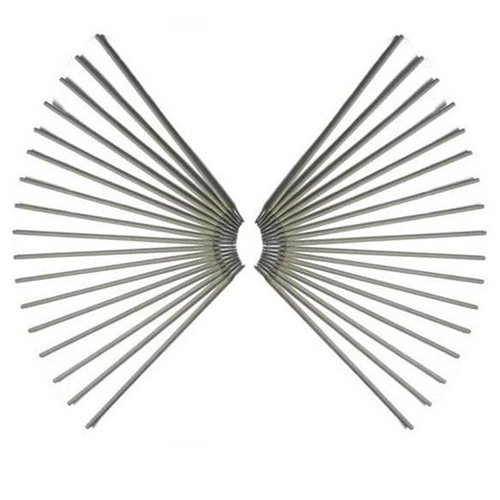CHARACTERISTICS & APPLICATIONS
ímet-7016A1(H4R) are low hydrogen potassium electrodes like the E7016 carbon steel electrodes classified in AWS A5.1/A5.1M, except that 0.5% molybdenum has been added. This addition increases the strength of the weld metal, especially at elevated temperatures, and provides some increase in corrosion resistance; however, it may reduce the notch toughness of the weld metal. Typical applications include the welding of C-Mo steel base metals such as ASTM A204 plate and A335-P1 pipe.
Storage and Drying Conditions: Not recommended | Ambient temperature (For R-Class)
Hydrogen can have adverse effects on welds in some steels under certain conditions. One source of this hydrogen is moisture in the electrode coverings. For this reason, the proper storage, treatment, and handling of electrodes are necessary.
Holding Ovens: 125°C–150°C Drying Conditions: 250°C–425°C
CHEMICAL COMPOSITION OF UNDILUTED WELD
|
C |
Mn | Si | P | S | Ni | Cr | Mo | V |
Addn Elements |
|
0.12 |
0.90 | 0.60 | 0.030 | 0.030 | NS | NS | 0.40-0.65 | NS |
NS |
Single values are maxima, except where specified otherwise.
ALL-WELD-METAL MECHANICAL PROPERTIES
Preheat and Interpass : 95-110°C | Post weld Heat Treatment : 620±15°C for 1 Hour(s) The temperature shall be raised at the rate of 85°C to 280°C per hour and allowed to cool at a rate not greater than 200°C per hour, and may be removed from the furnace when the temperature of the furnace has reached 300°C and allowed to cool in still air.
|
Tensile Strength, MPa |
Yield Strength, At 0.2% Offset, MPa | Elongation % |
Charpy V-Notch Impact at NS°C, Joules |
|
490 |
390 | 22 |
NS |
Single values are minimal.
Limit of Moisture Content, % by weight max: 0.30 max (Reconditioned) | 0.40 (As Exposed) for H4 version Diffusible Hydrogen Content Average, Maximum, mL(H2)/100 g Deposited Metal: 4.00
Welding Considerations
Preheat and interpass minimum temperatures also have a significant effect on the strength levels attained with certain low-alloy steel weld metals. These weld metals are affected by rapid cooling rates which tend to produce more martensitic or bainitic microstructures. These microstructures will often exhibit higher yield and tensile strengths with a decrease in ductility.
The cooling rate can be retarded by utilizing a higher preheat and interpass temperature. The preheat and interpass temperature ranges given herein are adequate for the preparation of the test assemblies.
However, in actual production, users are encouraged to test their own procedures to verify that they have selected preheat and interpass temperatures which will produce desirable results in production.
SIZES & CURRENT CONDITIONS (AC or DCEP)
| DIAMETER, mm | LENGTH, mm |
Amperes |
|
2.50 |
350 | 65-110 |
|
3.15, 3.20 |
350 | 100-150 |
| 4.00 | 350, 450 |
140-200 |
| 5.00 | 450 |
180-255 |
NOTE: H4 R variant is available for supply on request.
WARNING: Safety and health information is available from many sources, including, but not limited to Safety and Health Fact Sheets listed in A11.3, ANSI Z49.1 Safety in Welding, Cutting, and Allied Processes published by the American Welding Society, 8669 Doral Blvd., Suite 130, Doral, FL 33166., and applicable federal and state regulations. The Safety and Health Fact Sheets are revised, and additional sheets added periodically.

